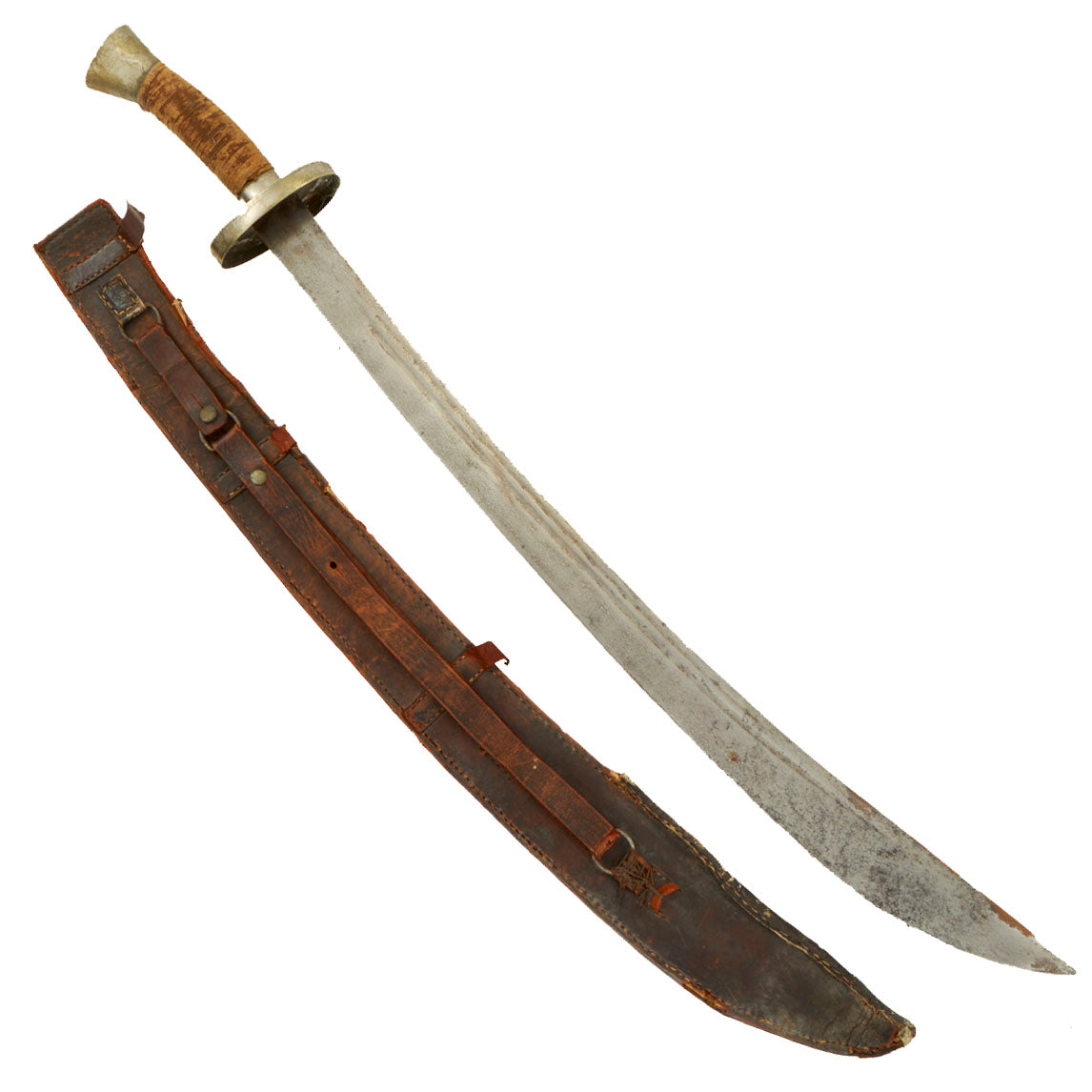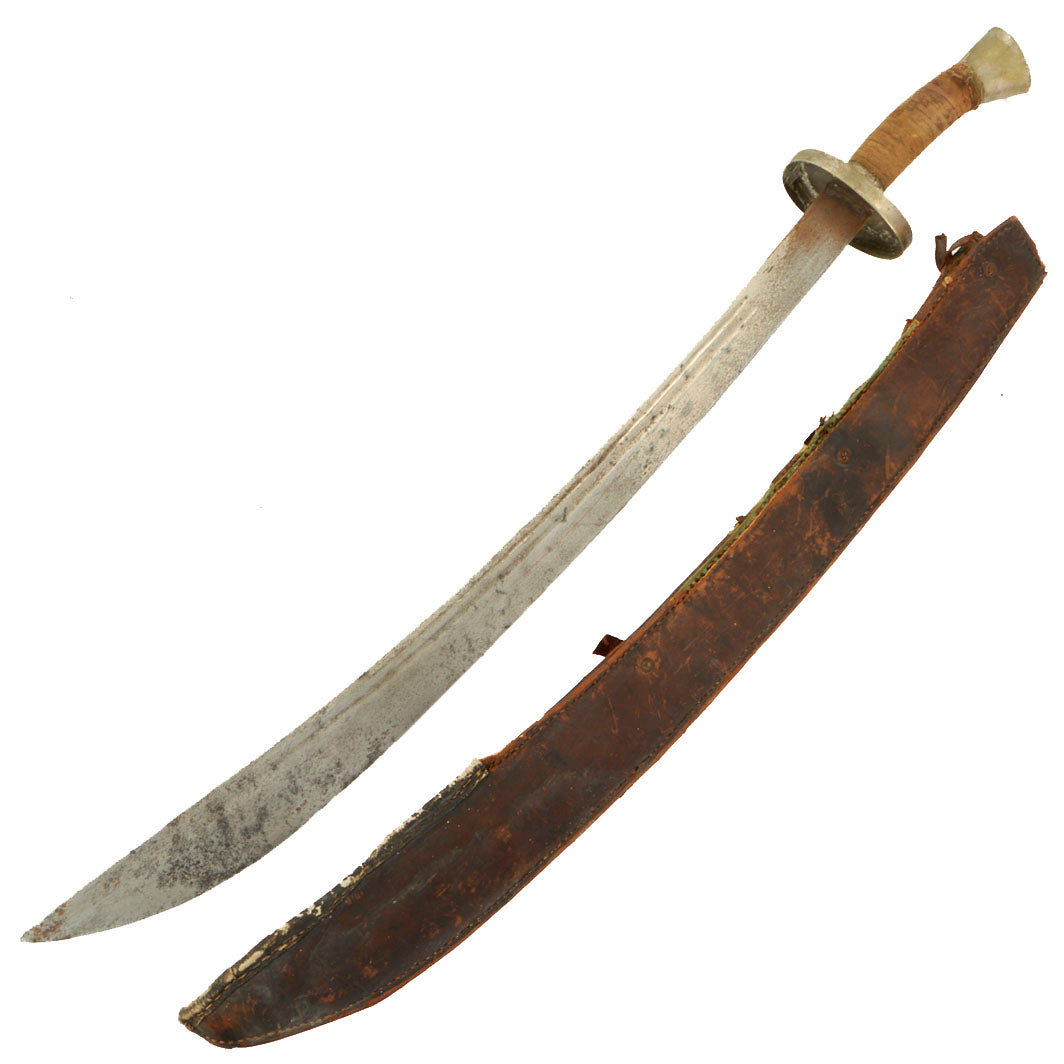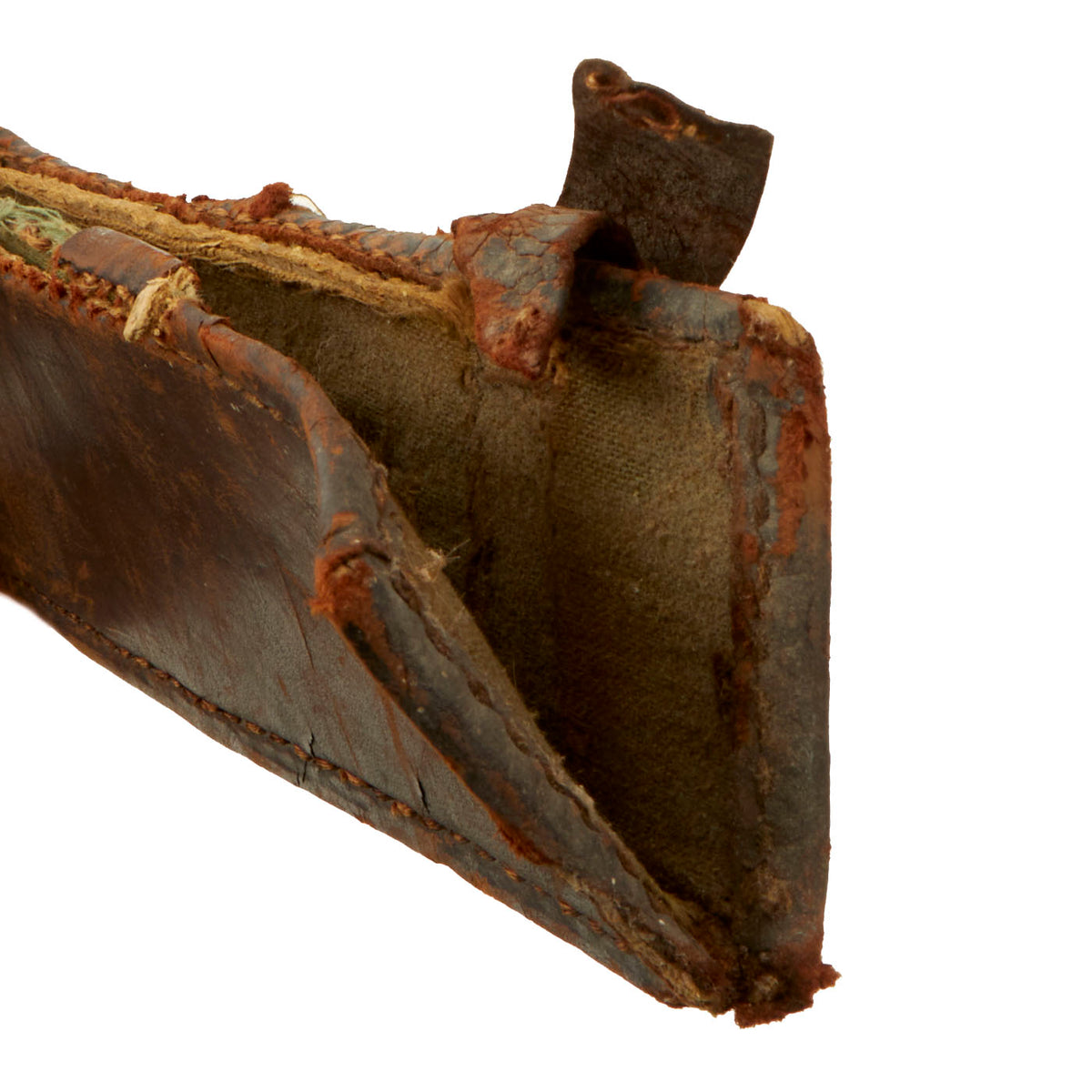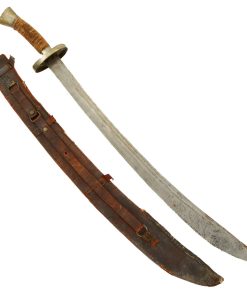Original Chinese WWII Era Jian Sword with Leather Covered Scabbard – U.S. Veteran Bringback from CBI Theater Original Items
$ 595,00 $ 178,50
Original Item: Only One Available. This is a typical example of the Chinese Jian sword, typically observed on the market as examples used during the “Boxer Rebellion”. This particular example, however, dates from the WWII era, and was brought back as a souvenir by an Army Air Corps Veteran who served in the China-Burma-India (C.B.I.) theater of operations.
Although of similar design no two are exactly alike. This example measures 35 1/2″ in overall length with a massive 29 1/2″ blade bearing a double fuller down each side. The grip is metal with a fabric wrap. The sword, though clearly “country” made, is housed in leather scabbard that is fitted with a shoulder strap allowing the sword to be worn on the back of the soldier carrying it. Originally, the scabbard had two straps on the top of the scabbard that secured to snaps which allowed the sword to “break away” when the user retracted it from the scabbard.
Likely a piece made to arm a regional warlord’s small army, it is well made, yet somewhat crude. Most likely this was obtained from a member of the irregular Chinese forces which occasionally assisted in guarding Airfields on the Chinese mainland. There is no way to be completely certain.
The jian (simplified Chinese: 剑; traditional Chinese: 劍; pinyin: jiàn; Cantonese: Gim) is a double-edged straight sword used during the last 2,500 years in China. The first Chinese sources that mention the jian date to the 7th century BCE during the Spring and Autumn period; one of the earliest specimens being the Sword of Goujian.
Historical one-handed versions have blades varying from 45 to 80 centimeters (18 to 31 inches) in length. The weight of an average sword of 70-centimetre (28-inch) blade-length would be in a range of approximately 700 to 900 grams (1.5 to 2 pounds). There are also larger two-handed versions used for training by many styles of Chinese martial arts.
Professional jian practitioners are referred to as jianke (Chinese: 剑客; pinyin: jiànkè; literally: “sword guests” or “swordsmen”; a term dating from the Han dynasty). In Chinese folklore, it is known as “The Gentleman of Weapons” and is considered one of the four major weapons, along with the Gun (staff), Qiang (spear), and the Dao (sabre).
Fast Shipping with Professional Packaging
Thanks to our longstanding association with UPS FedEx DHL, and other major international carriers, we are able to provide a range of shipping options. Our warehouse staff is expertly trained and will wrap your products according to our exact and precise specifications. Prior to shipping, your goods will be thoroughly examined and securely secured. We ship to thousands clients each day across multiple countries. This shows how we're dedicated to be the largest retailer on the internet. Warehouses and distribution centres can be located throughout Europe as well as the USA.
Note: Orders with more than one item will be assigned a processing date depending on the item.
Before shipping before shipping, we'll conduct a thorough inspection of the items you have ordered. Today, the majority of orders will be delivered within 48 hours. The delivery time will be between 3-7 days.
Returns
The stock is dynamic and we cannot completely manage it because multiple stakeholders are involved, including our factory and warehouse. So the actual stock may alter at any time. It's possible that you may not receive your order once the order has been made.
Our policy is valid for a period of 30 days. If you don't receive the product within 30 days, we are not able to issue a refund or an exchange.
You can only return an item if it is unused and in the same state as the day you received it. You must have the item in its original packaging.
Related products
Uncategorized
Australian WWII Owen MK1 Machine Carbine SMG Custom Fabricated Replica with Sling Original Items
Uncategorized
Uncategorized
Uncategorized
Uncategorized
Uncategorized
Uncategorized
Uncategorized
Uncategorized
Armored Burgonet Helmet & Polearm from Scottish Castle Leith Hall Circa 1700 Original Items
Uncategorized
Band of Brothers ORIGINAL GERMAN WWII Le. F.H. 18 10.5cm ARTILLERY PIECE Original Items
Uncategorized
Uncategorized
Uncategorized
Uncategorized
Uncategorized
Uncategorized
Uncategorized
Uncategorized
Armoured Fighting Vehicles of the World: AFVs of World War One (Hardcover Book) New Made Items
Uncategorized
Uncategorized
Angolan Rebel 1970s era 60mm Inert Display Mortar from Angolan Civil War Original Items
Uncategorized












































































